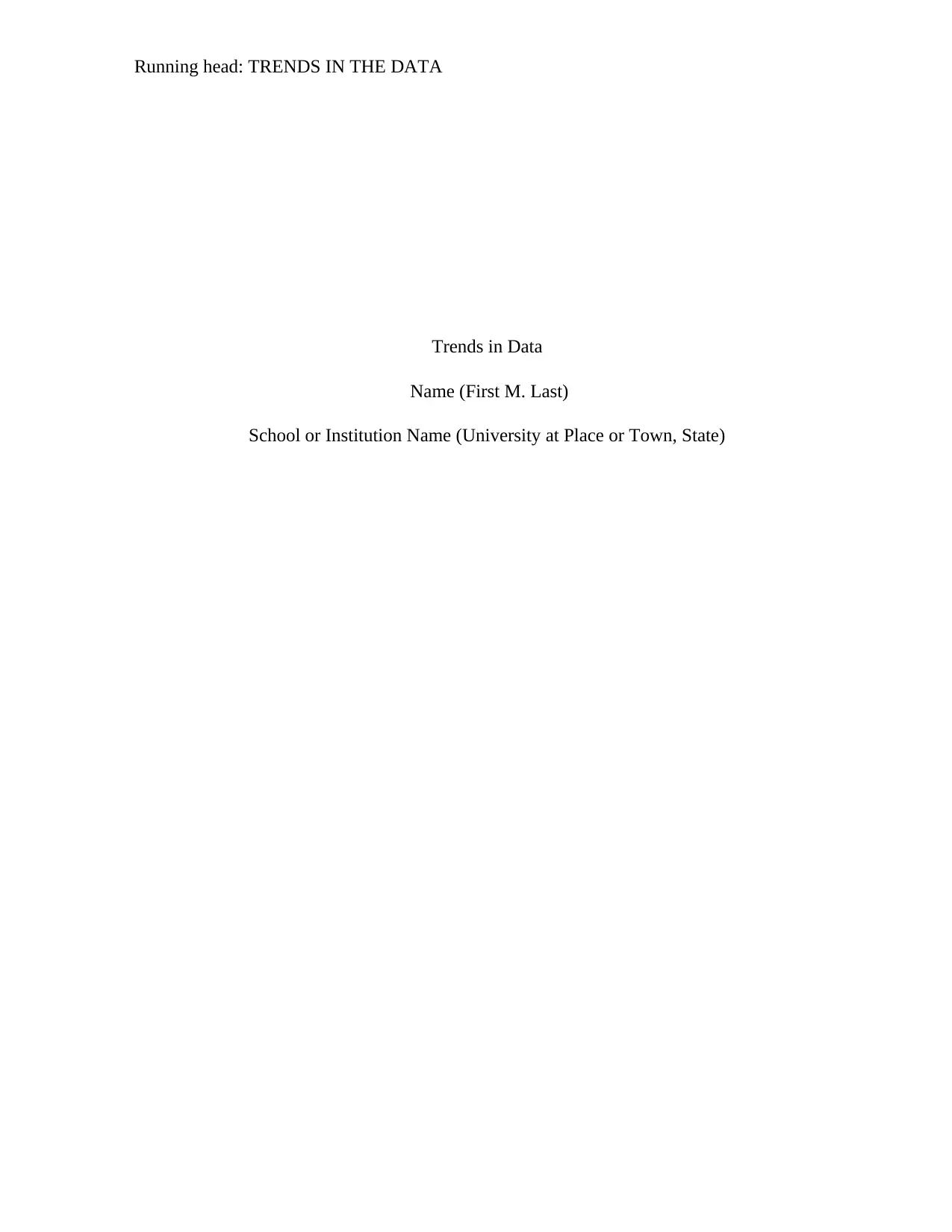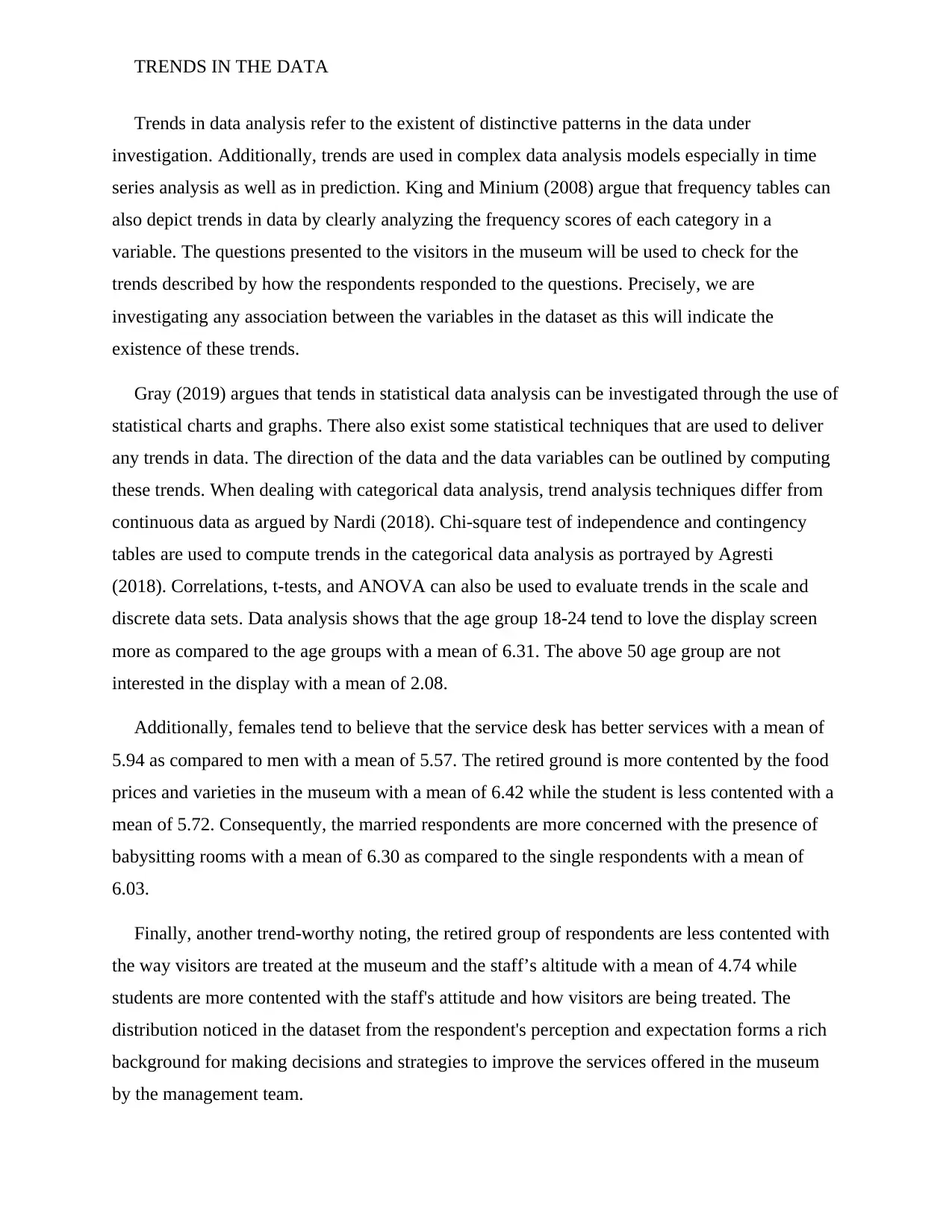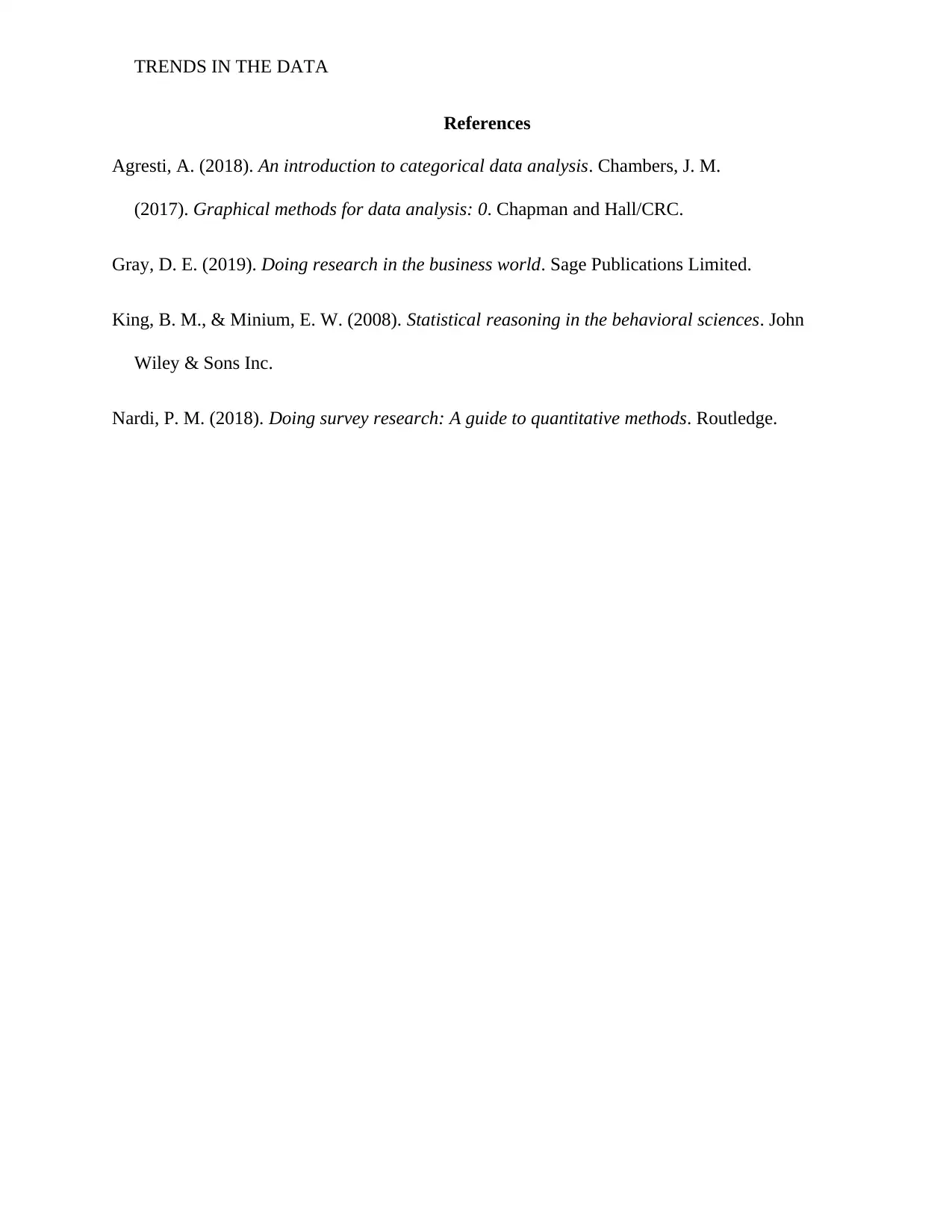Analyzing Trends in Museum Visitor Data: Survey and Demographics
VerifiedAdded on 2022/08/14
|3
|596
|17
Report
AI Summary
This report analyzes trends in museum visitor data collected through a survey. The analysis focuses on identifying patterns and correlations between demographics and visitor satisfaction levels. The study examines responses from 270 participants, exploring the distribution of demographics such as gender, age, and marital status, presented with pie charts. The report further investigates trends, for example, how different age groups perceive interactive screens or outdoor environments. A ranking analysis compares pre-trip expectations with post-visit experiences, providing insights into visitor satisfaction. The findings highlight key areas for museum management to improve services and enhance the visitor experience, including staff attitude, food prices and variety, and babysitting room availability. The data reveals that the age group 18-24 tend to love the display screen more as compared to the age groups with a mean of 6.31 and the above 50 age group are not interested in the display with a mean of 2.08. Additionally, females tend to believe that the service desk has better services with a mean of 5.94 as compared to men with a mean of 5.57. The retired ground is more contented by the food prices and varieties in the museum with a mean of 6.42 while the student is less contented with a mean of 5.72. Consequently, the married respondents are more concerned with the presence of babysitting rooms with a mean of 6.30 as compared to the single respondents with a mean of 6.03. Finally, another trend-worthy noting, the retired group of respondents are less contented with the way visitors are treated at the museum and the staff’s altitude with a mean of 4.74 while students are more contented with the staff's attitude and how visitors are being treated.
1 out of 3






![[object Object]](/_next/static/media/star-bottom.7253800d.svg)